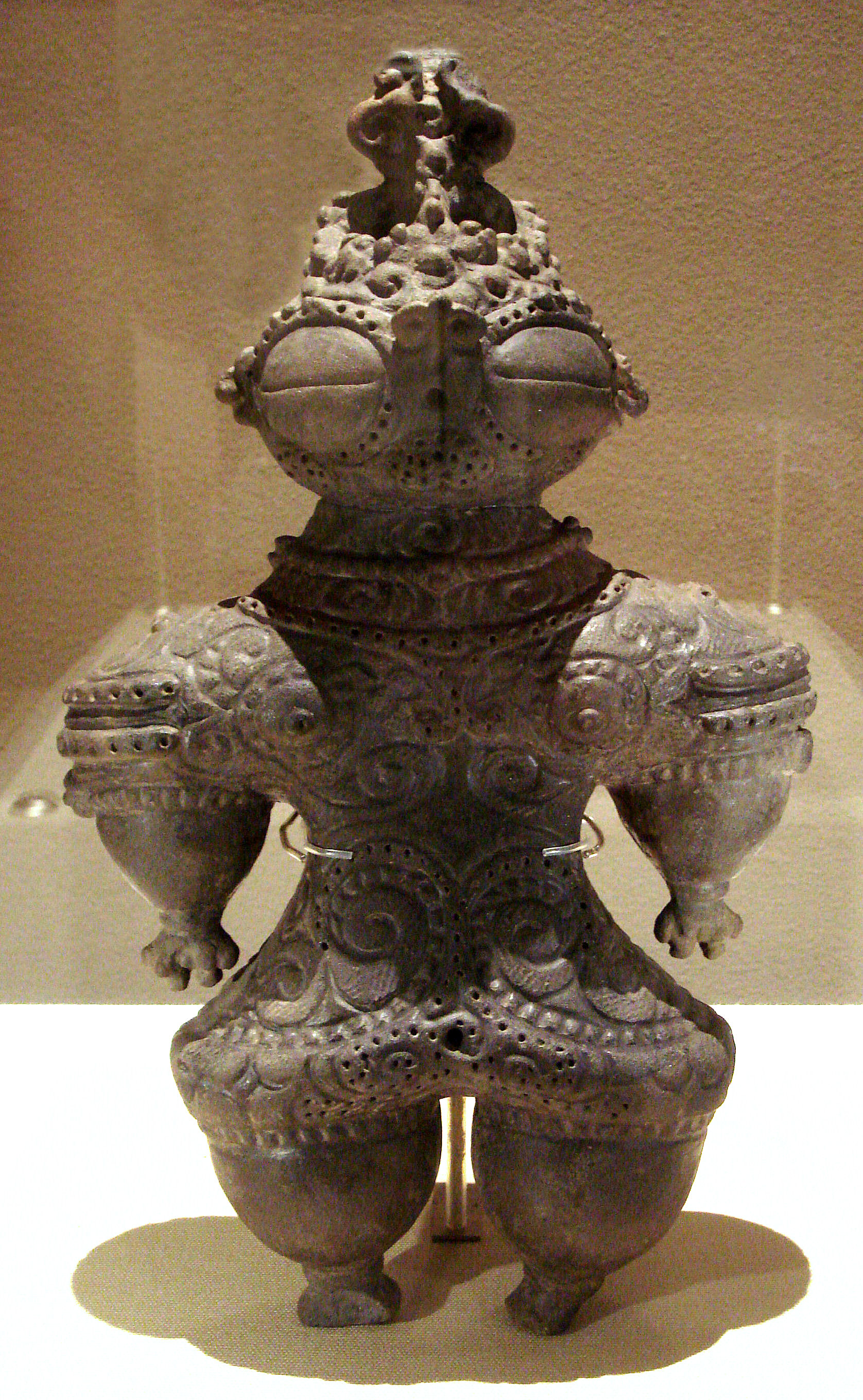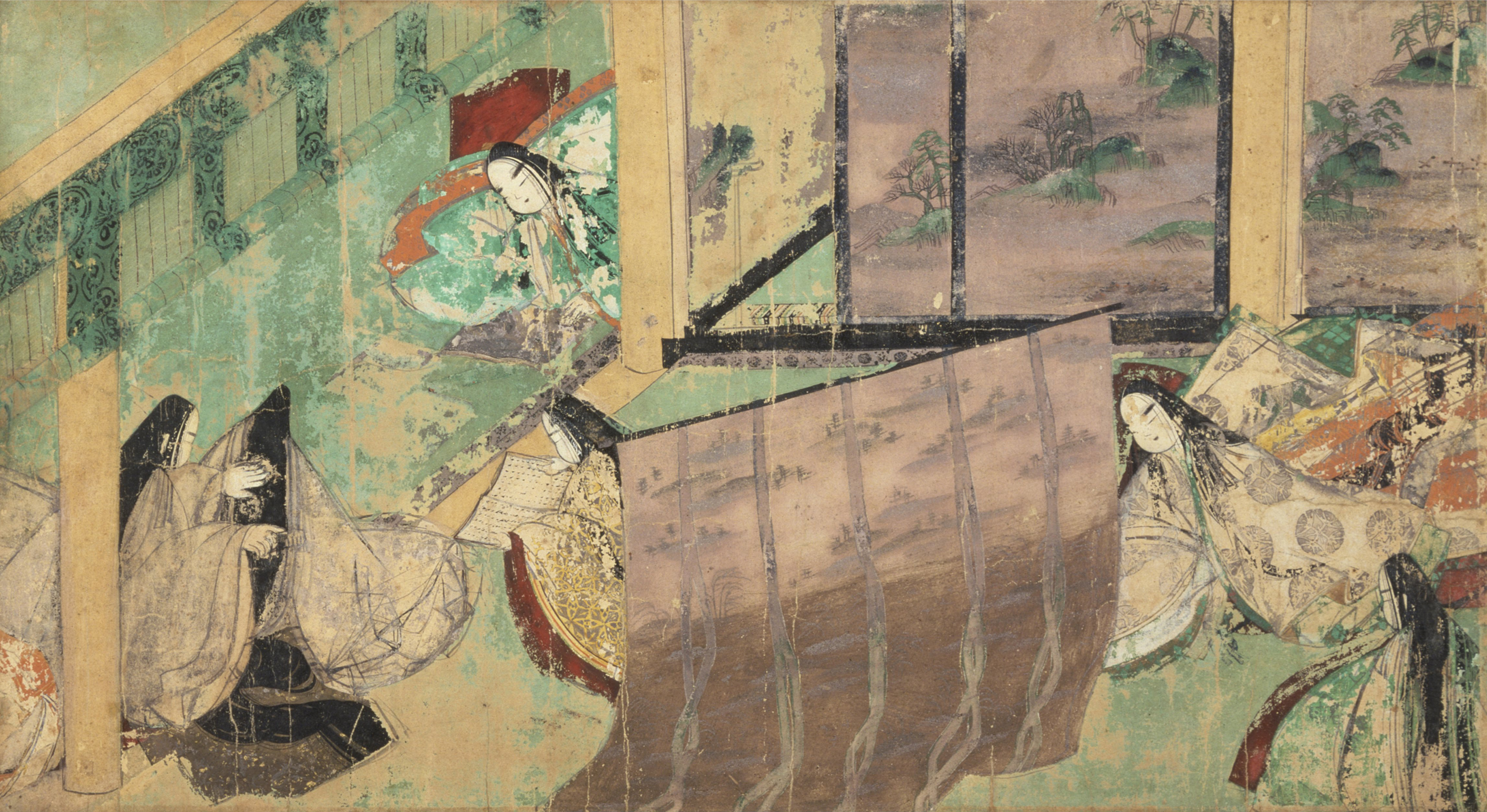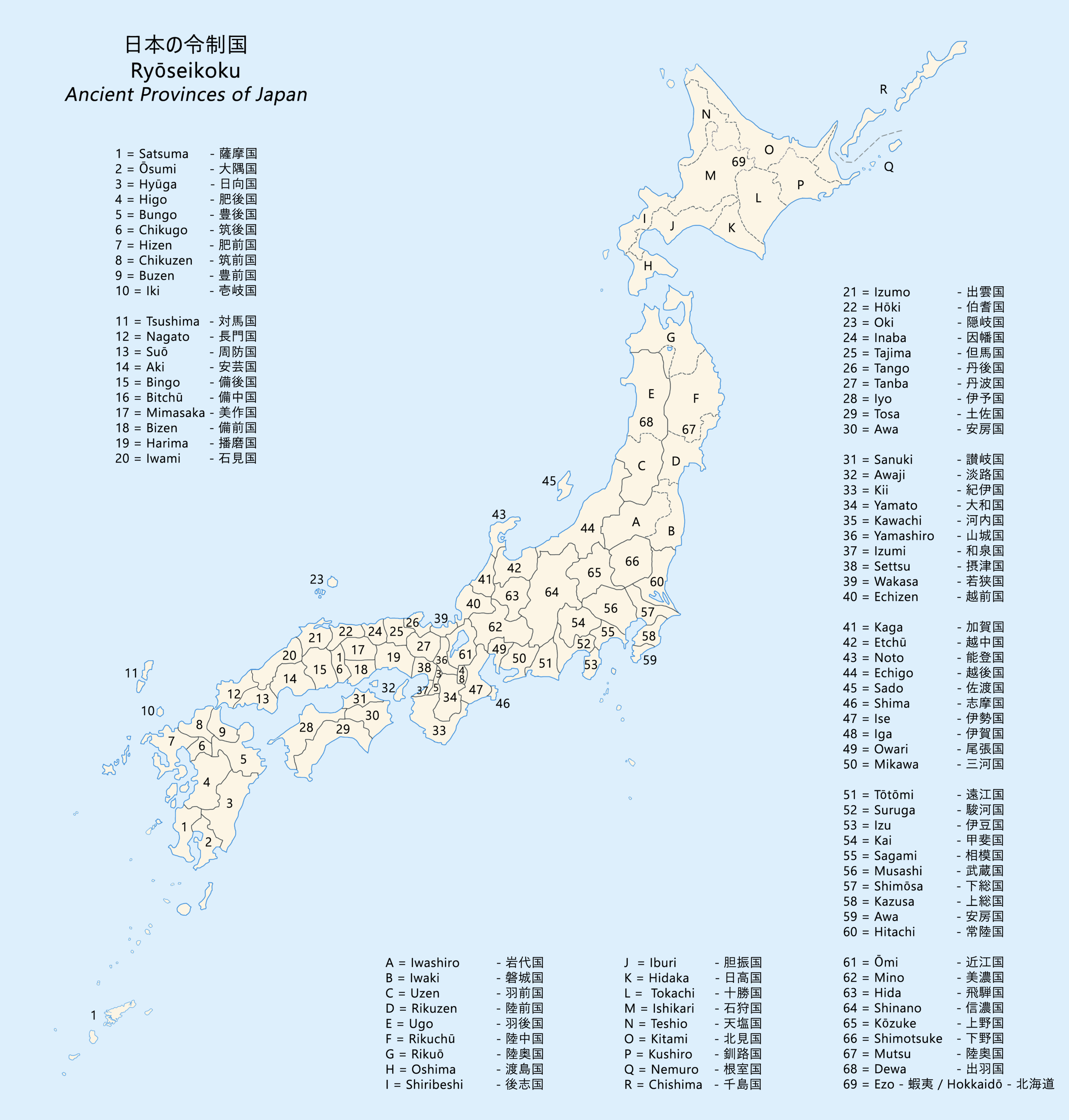|
Fukinuki Yatai
Fukinuki yatai (吹抜屋台) describes a feature of Japanese art particularly associated with '' e-maki'' (絵巻) painted scrolls, famously for example, yamato-e. Literally meaning "blown off roof", ''fukinuki yatai'' relates to the depiction of both interior and exterior environments - including rooms, screens, and architecture where the roof and walls are removed and the beams are preserved. The basic visual feature depicts the interior scene from an upper diagonal with the roof, ceiling, and sometimes inner partitions removed. From an artistic perspective, it also importantly describes the composition by which character relations, or even feelings, are depicted in the layout. This technique was used in early Japanese Heian period ( 平安時代) scrolls with very few exceptions until realism in Kamakura period ( 鎌倉) art flourished.Beynon, David 2012, Superflat architecture : culture and dimensionality'', in Interspaces : Art + Architectural Exchanges from East to West'' ... [...More Info...] [...Related Items...] OR: [Wikipedia] [Google] [Baidu] |
Japanese Art
Japanese art covers a wide range of art styles and media, including ancient pottery, sculpture, ink painting and calligraphy on silk and paper, '' ukiyo-e'' paintings and woodblock prints, ceramics, origami, and more recently manga and anime. It has a long history, ranging from the beginnings of human habitation in Japan, sometime in the 10th millennium BC, to the present-day country. Japan has been subject to sudden invasions of new ideas followed by long periods of minimal contact with the outside world. Over time the Japanese developed the ability to absorb, imitate, and finally assimilate those elements of foreign culture that complemented their aesthetic preferences. The earliest complex art in Japan was produced in the 7th and 8th centuries in connection with Buddhism. In the 9th century, as the Japanese began to turn away from China and develop indigenous forms of expression, the secular arts became increasingly important; until the late 15th century, both religious an ... [...More Info...] [...Related Items...] OR: [Wikipedia] [Google] [Baidu] |
Emakimono
or is an illustrated horizontal narration system of painted handscrolls that dates back to Nara-period (710–794 CE) Japan. Initially copying their much older Chinese counterparts in style, during the succeeding Heian (794–1185) and Kamakura periods (1185–1333), Japanese developed their own distinct style. The term therefore refers only to Japanese painted narrative scrolls. As in the Chinese and Korean scrolls, combine calligraphy and illustrations and are painted, drawn or stamped on long rolls of paper or silk sometimes measuring several metres. The reader unwinds each scroll little by little, revealing the story as seen fit. are therefore a narrative genre similar to the book, developing romantic or epic stories, or illustrating religious texts and legends. Fully anchored in the style, these Japanese works are above all an everyday art, centered on the human being and the sensations conveyed by the artist. Although the very first 8th-century were copies of C ... [...More Info...] [...Related Items...] OR: [Wikipedia] [Google] [Baidu] |
Yamato-e
is a style of Japanese painting inspired by Tang dynasty paintings and fully developed by the late Heian period. It is considered the classical Japanese style. From the Muromachi period (15th century), the term Yamato-e has been used to distinguish work from contemporary Chinese-style paintings , which were inspired by Chinese Song and Yuan-era ink wash paintings. Characteristic features of Yamato-e include many small figures and careful depictions of details of buildings and other objects, the selection of only some elements of a scene to be fully depicted, the rest either being ignored or covered by a "floating cloud", an oblique view from above showing interiors of buildings as though through a cutaway roof, and very stylised depiction of landscape. Yamato-e very often depict narrative stories, with or without accompanying text, but also show the beauty of nature, with famous places or the four seasons . The pictures are often on scrolls that can be hung on a wall (), ... [...More Info...] [...Related Items...] OR: [Wikipedia] [Google] [Baidu] |
Genji Emaki 01003 013
Genji may refer to: * Genji (era), an era in Japanese history (1864–65) *Hikaru Genji, the main character of the 11th-century Japanese text ''The Tale of Genji'' *Genji, an alternative name for the Minamoto clan *Genji (woreda), a district of the Oromia Region, Ethiopia Video games * '' Genji: Dawn of the Samurai'', a PlayStation 2 video game * '' Genji: Days of the Blade'', a PlayStation 3 video game * Genji (Overwatch), a player character in the video games ''Overwatch'' and ''Heroes of the Storm'' * Genji the Pollen Prophet, a player character in the video game '' Awesomenauts'' * Genji, a character from ''Pokémon'' series * Genji, a rabbit villager in the video game series '' Animal Crossing'' See also * Kenji (other) Kenji may refer to: *Kenji (given name), a masculine Japanese given name, and list of people & characters with this name *Kenji (era), a Japanese era spanned from 1275 to 1278 *Kenji (manga), ''Kenji'' (manga) (拳児), a 1980s manga by Matsuda R ... [...More Info...] [...Related Items...] OR: [Wikipedia] [Google] [Baidu] |
Japanese Architecture
has been typified by wooden structures, elevated slightly off the ground, with tiled or thatched roofs. Sliding doors ('' fusuma'') and other traditional partitions were used in place of walls, allowing the internal configuration of a space to be customized for different occasions. People usually sat on cushions or otherwise on the floor, traditionally; chairs and high tables were not widely used until the 20th century. Since the 19th century, however, Japan has incorporated much of Western, modern, and post-modern architecture into construction and design, and is today a leader in cutting-edge architectural design and technology. The earliest Japanese architecture was seen in prehistoric times in simple pit-houses and stores adapted to the needs of a hunter-gatherer population. Influence from Han dynasty China via Korea saw the introduction of more complex grain stores and ceremonial burial chambers. The introduction of Buddhism in Japan during the sixth century was a c ... [...More Info...] [...Related Items...] OR: [Wikipedia] [Google] [Baidu] |
Character (arts)
In fiction, a character (or speaker, in poetry) is a person or other being in a narrative (such as a novel, play, radio or television series, music, film, or video game). The character may be entirely fictional or based on a real-life person, in which case the distinction of a "fictional" versus "real" character may be made. Derived from the Ancient Greek word , the English word dates from the Restoration, although it became widely used after its appearance in ''Tom Jones'' by Henry Fielding in 1749. From this, the sense of "a part played by an actor" developed.Harrison (1998, 51-2) quotation: (Before this development, the term '' dramatis personae'', naturalized in English from Latin and meaning "masks of the drama," encapsulated the notion of characters from the literal aspect of masks.) Character, particularly when enacted by an actor in the theatre or cinema, involves "the illusion of being a human person". In literature, characters guide readers through their sto ... [...More Info...] [...Related Items...] OR: [Wikipedia] [Google] [Baidu] |
Heian Period
The is the last division of classical Japanese history, running from 794 to 1185. It followed the Nara period, beginning when the 50th emperor, Emperor Kanmu, moved the capital of Japan to Heian-kyō (modern Kyoto). means "peace" in Japanese. It is a period in Japanese history when the Chinese influences were in decline and the national culture matured. The Heian period is also considered the peak of the Japanese imperial court and noted for its art, especially poetry and literature. Two types of Japanese script emerged, including katakana, a phonetic script which was abbreviated into hiragana, a cursive alphabet with a unique writing method distinctive to Japan. This gave rise to Japan's famous vernacular literature, with many of its texts written by court women who were not as educated in Chinese compared to their male counterparts. Although the Imperial House of Japan had power on the surface, the real power was in the hands of the Fujiwara clan, a powerful aristocr ... [...More Info...] [...Related Items...] OR: [Wikipedia] [Google] [Baidu] |
平安時代
The is the last division of classical Japanese history, running from 794 to 1185. It followed the Nara period, beginning when the 50th emperor, Emperor Kanmu, moved the capital of Japan to Heian-kyō (modern Kyoto). means "peace" in Japanese. It is a period in Japanese history when the Chinese influences were in decline and the national culture matured. The Heian period is also considered the peak of the Japanese imperial court and noted for its art, especially poetry and literature. Two types of Japanese script emerged, including katakana, a phonetic script which was abbreviated into hiragana, a cursive alphabet with a unique writing method distinctive to Japan. This gave rise to Japan's famous vernacular literature, with many of its texts written by court women who were not as educated in Chinese compared to their male counterparts. Although the Imperial House of Japan had power on the surface, the real power was in the hands of the Fujiwara clan, a powerful aris ... [...More Info...] [...Related Items...] OR: [Wikipedia] [Google] [Baidu] |
Kamakura Period
The is a period of Japanese history that marks the governance by the Kamakura shogunate, officially established in 1192 in Kamakura by the first '' shōgun'' Minamoto no Yoritomo after the conclusion of the Genpei War, which saw the struggle between the Taira and Minamoto clans. The period is known for the emergence of the samurai, the warrior caste, and for the establishment of feudalism in Japan. During the early Kamakura period, the shogunate continued warfare against the Northern Fujiwara which was only defeated in 1189. Then, the authority to the Kamakura rulers waned in the 1190s and power was transferred to the powerful Hōjō clan in the early 13th century with the head of the clan as regent ( Shikken) under the shogun which became a powerless figurehead. The later Kamakura period saw the invasions of the Mongols in 1274 and again in 1281. To reduce the amount of chaos, the Hōjō rulers decided to decentralize power by allowing two imperial lines – Northern and Sout ... [...More Info...] [...Related Items...] OR: [Wikipedia] [Google] [Baidu] |
鎌倉
is a city in Kanagawa Prefecture, Japan. Kamakura has an estimated population of 172,929 (1 September 2020) and a population density of 4,359 persons per km² over the total area of . Kamakura was designated as a city on 3 November 1939. Kamakura was the '' de facto'' capital of Japan from 1185 to 1333 as the seat of the Kamakura Shogunate, and became the nation's most populous settlement during the Kamakura period. Kamakura is a popular domestic tourist destination in Japan as a coastal city with a high number of seasonal festivals, as well as ancient Buddhist and Shinto shrines and temples. Geography Surrounded to the north, east, and west by hills and to the south by the open water of Sagami Bay, Kamakura is a natural fortress. Before the construction of several tunnels and modern roads that now connect it to Fujisawa, Ofuna ( ja) and Zushi, on land it could be entered only through narrow artificial passes, among which the seven most important were called , a na ... [...More Info...] [...Related Items...] OR: [Wikipedia] [Google] [Baidu] |
Prince Shōtoku
, also known as or , was a semi-legendary regent and a politician of the Asuka period in Japan who served under Empress Suiko. He was the son of Emperor Yōmei and his consort, Princess Anahobe no Hashihito, who was also Yōmei's younger half-sister. But later, he was adopted by Prince Shōtoken. His parents were relatives of the ruling Soga clan and also he was involved in the defeat of the rival Mononobe clan. The primary source of the life and accomplishments of Prince Shōtoku comes from the '' Nihon Shoki''. The Prince is renowned for modernizing the government administration and for promoting Buddhism in Japan. Over successive generations, a devotional cult arose around the figure of Prince Shōtoku for the protection of Japan, the Imperial Family, and for Buddhism. Key religious figures such as Saichō, Shinran and others claimed inspiration or visions attributed to Prince Shōtoku. Genealogy Parents *Father: Emperor Yōmei (用明天皇, 517 – 21 May 587) *M ... [...More Info...] [...Related Items...] OR: [Wikipedia] [Google] [Baidu] |









